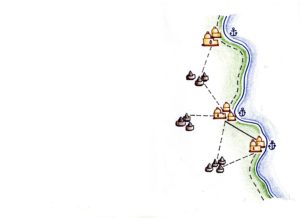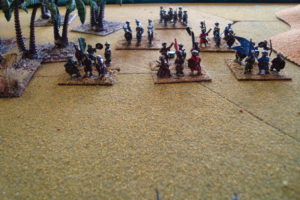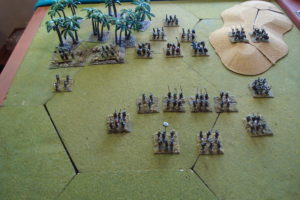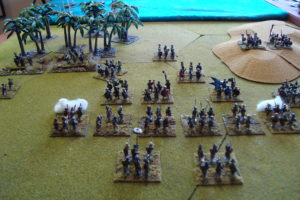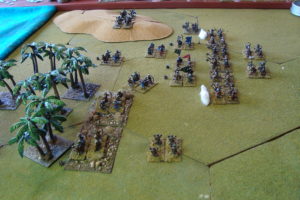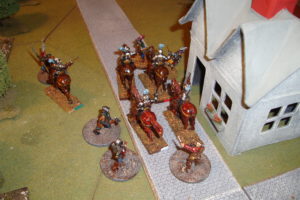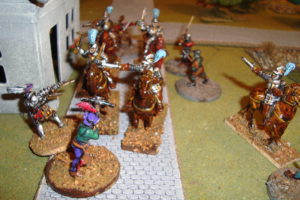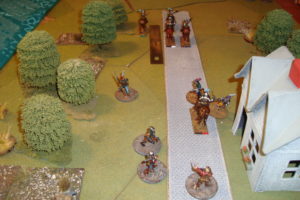After a break, I continued playing the initial encounter between the Portuguese and Zanj.
The battle turned into a real slug-fest, with the Portuguese Crossbowmen able to extricate themselves from melee, and the Targeteers, led by Lord Rolando, charging into the Zanj tribesmen. On the left, the Zanj had enveloped a Portuguese Musket unit. But wait…..there was something very, very, very wrong…….Take a look at the picture, which shows a real pounding in progress, but then read the caption.
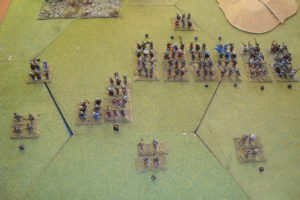
Yes, I completely screwed up the rules (Shocking!). Once resolve drops to a “one” a unit must withdraw 1d3 movement units directly to its rear, maintaining its facing, and cannot initiate melee until its resolve increases. And, if this unit was in melee (as are all of these), its foe can attempt to pursue.
Oh My…….kind of changes the dynamics, doesn’t it?
Reset!
